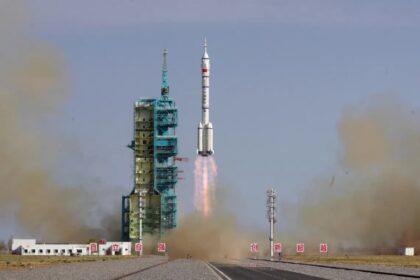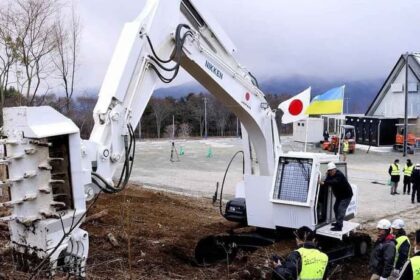China’s Zuchongzhi 3.0 Quantum Chip: A New Benchmark in the Global Race for Quantum Supremacy
In a development that has sent ripples through the global technology sector, Chinese scientists have unveiled the Zuchongzhi 3.0 quantum processor—a 105-qubit superconducting chip that claims to outpace the world’s fastest supercomputers by a factor of one quadrillion. This breakthrough, achieved by a team at the University of Science and Technology of China (USTC), marks a pivotal moment in the international race for quantum supremacy, challenging the dominance of US tech giants such as Google and sparking intense interest from governments, industry leaders, and researchers worldwide.
- China’s Zuchongzhi 3.0 Quantum Chip: A New Benchmark in the Global Race for Quantum Supremacy
- What Makes Zuchongzhi 3.0 So Revolutionary?
- How Fast Is Zuchongzhi 3.0 Compared to Its Rivals?
- Engineering Innovations: The Heart of the Breakthrough
- Quantum Supremacy: What Does It Really Mean?
- How Does Zuchongzhi 3.0 Compare to Google’s Willow and Other Global Efforts?
- Challenges Ahead: Error Correction, Scalability, and Practical Applications
- Broader Implications: How Will Quantum Computing Change the World?
- Voices from the Field: What Experts Are Saying
- In Summary
What Makes Zuchongzhi 3.0 So Revolutionary?
The Zuchongzhi 3.0 processor stands out for its scale, speed, and engineering sophistication. It features 105 transmon qubits—quantum bits that serve as the fundamental units of information in a quantum computer—arranged in a 15-by-7 rectangular lattice. These qubits are crafted from advanced materials like tantalum, niobium, and aluminum, which help reduce noise and improve stability, two critical factors for reliable quantum computation.
Superconducting qubits, such as those used in Zuchongzhi 3.0, must maintain their quantum state (a property known as coherence) long enough to perform complex calculations. The new chip boasts a coherence time of up to 72 microseconds and a dephasing time of 58 microseconds, both of which are considered world-class. These improvements are the result of meticulous engineering, including optimized qubit design, refined fabrication methods, and the use of an indium bump flip-chip process to bond components with high precision and minimal contamination.
Gate fidelity—a measure of how accurately quantum operations are performed—has also reached new heights. Zuchongzhi 3.0 achieves single-qubit gate fidelities of 99.90% and two-qubit gate fidelities of 99.62%, metrics that rival or even surpass those of Google’s latest quantum chips.
How Fast Is Zuchongzhi 3.0 Compared to Its Rivals?
The most headline-grabbing claim about Zuchongzhi 3.0 is its performance in the random circuit sampling (RCS) benchmark. This test, designed to showcase quantum computational advantage, involves running a complex sequence of quantum operations and measuring the resulting output distribution—a task that quickly becomes infeasible for classical supercomputers as the number of qubits and circuit depth increases.
In a recent experiment, Zuchongzhi 3.0 completed an 83-qubit, 32-cycle RCS task in just a few hundred seconds. According to estimates, simulating this same task on the world’s fastest classical supercomputer, Frontier, would take approximately 6.4 billion years. For context, Google’s Sycamore chip, which made headlines in 2019 for achieving “quantum supremacy,” performed a similar task in 200 seconds—something Google claimed would take a classical computer 10,000 years. Zuchongzhi 3.0’s leap is not just incremental; it is exponential, widening the computational gap by six orders of magnitude.
Google’s latest Willow chip, also a 105-qubit device, has achieved similar feats, with claims that its RCS experiment would take a classical supercomputer 1025 years to simulate. However, direct comparisons are complicated by differences in experimental setups and circuit complexity. Still, the consensus among experts is that Zuchongzhi 3.0 and Willow are now at the forefront of quantum hardware, with each pushing the boundaries of what is technologically possible.
Engineering Innovations: The Heart of the Breakthrough
The leap from Zuchongzhi 2.0’s 66 qubits to Zuchongzhi 3.0’s 105 qubits is not just a matter of scaling up. It required a series of engineering breakthroughs:
- Material Science: The use of tantalum, niobium, and aluminum in qubit construction reduces noise and improves coherence times, allowing for longer and more complex computations.
- Flip-Chip Bonding: The indium bump flip-chip process enables precise alignment and integration of two sapphire chips, each containing a portion of the qubit array. This method minimizes contamination and improves signal integrity.
- Optimized Qubit Design: Advances in capacitor pad design, Josephson junction parameters, and wiring layouts have reduced error rates and enhanced stability.
- High-Fidelity Operations: Achieving gate fidelities above 99.9% is crucial for practical quantum computing, as even small errors can quickly accumulate in large circuits.
These innovations have enabled Zuchongzhi 3.0 to achieve operational fidelities and error rates that set new industry standards, paving the way for more reliable and scalable quantum systems.
Quantum Supremacy: What Does It Really Mean?
“Quantum supremacy” refers to the point at which a quantum computer can perform a task that is effectively impossible for any classical computer, even the most powerful supercomputers. The RCS benchmark is currently the gold standard for demonstrating this advantage, though it is important to note that the tasks involved are not directly useful for most real-world applications—they are designed to be hard for classical machines and easy for quantum ones.
As Zhu Xiaobo, chief designer of Zuchongzhi 3.0, explained, the roadmap for quantum computing involves three stages:
- Surpassing classical supercomputers in specific tasks (quantum supremacy)
- Finding practical quantum applications in areas like optimization, chemistry, and machine learning
- Achieving universal, fault-tolerant quantum computing capable of solving a wide range of problems
While Zuchongzhi 3.0’s achievement is a major milestone in the first stage, the journey toward practical, general-purpose quantum computers is ongoing. Experts estimate that universal, fault-tolerant quantum computing is still at least 15 years away.
How Does Zuchongzhi 3.0 Compare to Google’s Willow and Other Global Efforts?
The unveiling of Zuchongzhi 3.0 has intensified the global competition in quantum computing, particularly between China and the United States. Both countries have invested heavily in quantum research, recognizing its potential for economic, scientific, and military applications.
Google’s Willow chip, introduced in late 2024, also features 105 qubits and has demonstrated impressive performance in RCS benchmarks. According to comparative analyses, Willow has a slight edge in some qubit quality metrics, such as coherence times and gate fidelities, but Zuchongzhi 3.0 matches or exceeds it in others, including the sheer scale and speed of its RCS experiments.
Other major players in the field include IBM, which is pursuing a different approach with its own superconducting qubit technology, and Chinese teams working on photonic quantum computers, such as the Jiuzhang series. Each approach has its strengths and challenges, and the field remains highly dynamic, with new breakthroughs emerging regularly.
The Geopolitical Stakes
The race for quantum supremacy is not just a scientific contest—it has significant geopolitical implications. Quantum computers have the potential to revolutionize cryptography, materials science, pharmaceuticals, logistics, and artificial intelligence. They could also render current encryption methods obsolete, raising concerns about cybersecurity and national security.
The US Department of Defense and other agencies have highlighted China’s rapid progress in quantum technology as a potential strategic threat, citing efforts in quantum imaging, navigation, radar, and secure communications. The unveiling of Zuchongzhi 3.0 is likely to accelerate investment and research in quantum technologies worldwide.
Challenges Ahead: Error Correction, Scalability, and Practical Applications
Despite the remarkable achievements of Zuchongzhi 3.0, significant challenges remain before quantum computers can fulfill their promise in practical applications:
- Error Correction: Quantum systems are inherently fragile, and errors can quickly accumulate during complex computations. Developing robust quantum error correction methods is essential for scaling up to larger, more useful machines. The Zuchongzhi team is actively researching surface code error correction, aiming to increase code distances and improve fault tolerance.
- Scalability: Integrating hundreds or thousands of high-quality qubits while maintaining coherence and low error rates is a formidable engineering challenge. Innovations in chip design, materials, and fabrication will be crucial.
- Integration with Classical Systems: Quantum computers will need to interface seamlessly with classical computing infrastructure to be useful in real-world settings.
- Algorithm Development: While RCS benchmarks demonstrate quantum advantage, developing algorithms that solve practical problems faster than classical methods remains an open area of research.
As classical simulation techniques and algorithms improve, the bar for demonstrating quantum advantage continues to rise. Some critics argue that RCS benchmarks, while impressive, may not translate directly into real-world impact. Nonetheless, the steady progress in hardware, error correction, and algorithm development is bringing practical quantum computing closer to reality.
Broader Implications: How Will Quantum Computing Change the World?
The advent of quantum computers like Zuchongzhi 3.0 could transform entire industries. Potential applications include:
- Cryptography: Quantum computers could break widely used encryption schemes, necessitating the development of quantum-resistant cryptography.
- Drug Discovery: Quantum simulations could model complex molecules and chemical reactions, accelerating the development of new medicines.
- Materials Science: Quantum computers could help design new materials with desirable properties for energy, electronics, and manufacturing.
- Optimization: Quantum algorithms could solve complex optimization problems in logistics, finance, and supply chain management more efficiently than classical computers.
- Artificial Intelligence: Quantum machine learning could enable new approaches to data analysis and pattern recognition.
These possibilities are still largely theoretical, but the rapid pace of progress suggests that practical quantum applications may emerge within the next decade.
Voices from the Field: What Experts Are Saying
Peer reviewers and experts have praised the Zuchongzhi 3.0 research as a significant upgrade from previous devices, noting its world-leading performance and engineering sophistication. Nobel laureate Frank Wilczek commented on the transformative potential of quantum technologies, stating:
“These quantum tools will enable the development of more sophisticated quantum technologies, fueling further innovation and breakthroughs.”
Chief designer Zhu Xiaobo outlined the team’s vision for the future:
“Our roadmap involves not only surpassing classical supercomputers but also finding practical quantum applications and ultimately achieving universal, fault-tolerant quantum computing.”
The research team is actively exploring areas such as quantum error correction, entanglement, simulation, and quantum chemistry, laying the groundwork for the next generation of quantum technologies.
In Summary
- China’s Zuchongzhi 3.0 quantum chip features 105 superconducting qubits and claims performance one quadrillion times faster than the world’s top supercomputers.
- The chip’s engineering innovations include advanced materials, high-fidelity operations, and a scalable architecture, setting new benchmarks in quantum hardware.
- Zuchongzhi 3.0 outperformed Google’s Sycamore chip in random circuit sampling, though direct comparisons with Google’s Willow chip are complex.
- The breakthrough intensifies the global race for quantum supremacy, with significant geopolitical and economic implications.
- Major challenges remain, including error correction, scalability, and the development of practical quantum algorithms.
- Quantum computing promises to revolutionize fields such as cryptography, drug discovery, materials science, optimization, and artificial intelligence.
- Experts praise Zuchongzhi 3.0 as a milestone, but emphasize that the journey toward universal, fault-tolerant quantum computing is ongoing.












